Gaming's Most Bizarre Peripherals
Page 1 of 1
 Gaming's Most Bizarre Peripherals
Gaming's Most Bizarre Peripherals
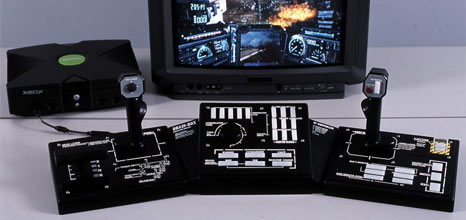
The way we play games is changing all the time. During the current hardware generation, we've witnessed the emergence of innovative new control schemes, such as motion interfaces and touch-screen technology. However, not all new peripherals were greeted with the level of acclaim that PS Move and Kinect received. Since the dawn of home computing, there has always been ill-conceived, unorthodox and downright weird controllers that end up on the proverbial scrapheap. DS takes a look at some of the most noteworthy misfits.
R.O.B the Robot (NES)
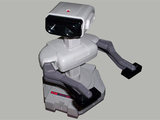
Following the infamous video game crash of 1983, Nintendo set out to widen the appeal of its NES system with the release of a novel and ambitious accessory. Launched in Japan in 1985 under the name Family Computer Robot, R.O.B extended console gaming beyond the confines of the television set. This intriguing contraption received optical commands from the TV screen and took part in gaming sessions with the player.
R.O.B was certainly innovative, proving that Nintendo has always been a forward-thinking studio. Introducing an accessory of this manner to stave off the effects of a plummeting market was a shrewd move, and one that would likely have paid dividends had the firm released more than two compatible software titles - Gyromite and Stack-Up - to support it. Although his lifecycle as a peripheral was short, R.O.B went on to make cameo appearances in several of Nintendo's flagship franchises, including Super Smash Bros, Mario Kart, Kirby and Star Fox.
Aura Interactor Virtual Reality Game Wear (1000CS / SNES / Genesis)

Since the dawn of video gaming, sections of the industry have maintained that virtual reality is the future of the medium. While none of the major gaming studios chose to invest in the technology, a firm named Virtuality attempted to harness it in 1991. Following the release of its Amiga-powered VR gaming system the 1000CS, the hardware firm launched the Aura Interactor Virtual Reality Game Wear - a chest and back harness that enabled the player to feel collisions, explosions and body blows.
The accessory was also compatible with the SNES and Mega Drive but - like the platform it was designed for and VR in general - failed to catch on. Only 350 1000CS machines were ever created, and their production was halted in 1994. Second-hand units retail between $10,000 and $20,000. Game Wear remained in circulation for some years after the platform's demise and can usually be found on sale through auction sites across the web.
Sega Action Chair (Master System)
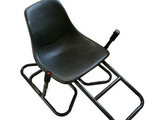
Motion controls have really taken off in the current hardware generation, but studios have been experimenting with the technology for over two decades. In the early '90s, Sega dipped its toes into this particular pool with the release of the Sega Action Chair for Master System. This ugly contraption may have resembled something from a back-alley plastic surgery clinic, but it enabled users to achieve an extra degree of immersion by picking up their movements and translating them on screen.
It was essentially a mass of black plastic with joysticks either side, though it's unattractive appearance was the least of its worries. It was an awkward interface, limited to flight sims like After Burner 2 and racers such as Road Rash - and even with these titles your basic control pad was preferable where usability was concerned. The Action Chair was a nice idea, though poorly executed.
Nintendo Power Glove (NES)

Continuing with the theme of primitive motion peripherals, Nintendo began dabbling in this control method several years before Sega. In 1989, the firm sanctioned the release of the Power Glove for the NES. Although the gaming giant did not have a hand in its development, the accessory was an officially licensed product, yet fell far short of the standards Nintendo fans had grown accustomed to.
Transmitting data to the console via three awkwardly-designed sensors, the Power Glove bore the traditional NES buttons on the forearm, along with a number pad, and had flex sensors in each of the fingers. Players could trigger commands through motion and finger-flexing, but the device's responsiveness left much to be desired. Put simply, the Power Glove didn't work. Titles designed specifically for the accessory such as Super Glove Ball and Street Brawler were almost playable, but other software barely functioned and the peripheral bombed. On the bright side, at least it cushioned the fist when you hit the screen in frustration.
Atari Mindlink (Atari 2600)

Although the next peripheral on our list was never officially released, the sheer ridiculousness of the concept alone justifies its inclusion. Intended to launch in 1984 for the Atari 2600, the Mindlink system consisted of a headband, an infrared transmitter and a receiver. The idea was to create an interface that enabled users to control the action on screen using head movements.
After an extensive testing phase, Atari found that the demands the peripheral placed on eyebrow movement induced headaches, and thus decided to shelve it. Two games were in development for Mindlink prior to its cancellation - Bionic Breakthrough and Mind Maze. The former was a bat and ball affair and the latter a failed ESP experiment. Neither game ever saw the light of day due to limited appeal. While Atari was innovative enough to dream up a unique means of interactivity, one has to wonder if the firm ever considered why any sane person would want to control a game using their eyebrows.
Sega Fishing Controller (Dreamcast)
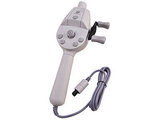
The Dreamcast was a criminally under-appreciated machine. During its relatively short lifecycle, the platform demonstrated how forward-thinking its platform holder was around the turn of the millennium. As well as being the first internet-ready console to receive a worldwide release, the Sega machine played host to more than its fair share of wacky peripherals, and the Fishing Controller was among the best of them.
Designed to work with Sega Bass Fishing, the device pandered to a somewhat niche audience, though it worked exceptionally well. Strangely enough, subsequent releases SoulCalibur and Virtua Tennis 2 used the input as a sword and racket respectively. Harnessing motion play in this way, Sega essentially devised the Wii Remote concept before Nintendo. Unfortunately, it didn't catch on quite as well, despite being a worthy entry in the controller hall of fame.
Finger Dance Pad (PSOne / PS2)
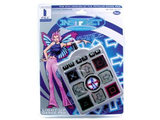
Dance sims like DanceDanceRevolution gained serious momentum in the late '90s, making the jump onto home consoles. Dance mats became a regular feature at beer-fuelled parties as the gimmick took hold, but these simulations held little appeal to those short on stamina. Compatible with PSOne and PS2 systems, the Finger Dance Pad aimed to change that, enabling gamers to follow the rhythm with their fingertips.
The controller was a scaled-down version of a dance mat designed to sit in the palm of your hand. It even had shoulder buttons either side and could be used as a standard controller on most games. Much like the genre that spawned it, the Finger Dance Pad proved to be a fad, and its production dwindled as the last hardware generation drew to a close. These devices can still be picked up for relatively cheap on eBay, though demand for them is hardly through the roof.
Steel Battalion (Xbox)
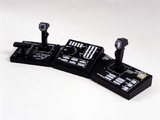
There are times when a d-pad, a few action buttons and some analogue sticks just aren't enough for some people. In an attempt to deliver the most authentic flight sim experience to date, Capcom released one of the most elaborate interfaces the gaming world has ever seen. Consisting of 40 buttons, two joysticks, three foot pedals and a throttle control, the Steel Battalion controller was designed for use with an Xbox title of the same name.
Despite being one of the most complex - and arguably realistic - interfaces in console history, the lack of any memorable games to support it limited its appeal. A hefty launch price of around £130 also didn't help matters, though the hardware and software bundle did break even in terms of units shipped and sold. The peripheral is still in circulation today with second-hand units going for around £200.
Baby And Me (Wii)

Just when we thought we'd seen every mundane activity on the planet turned into a Wii title, 505 Games developed a doll-playing sim. What's more, Baby And Me came bundled with Wiimote-compatible doll to facilitate competitive virtual babysitting. Although there's something unwholesome about this interface, the consensus was that it catered for its target audience well.
The game is only available in Australia, so it's entirely possible that the rest of the world will never get to enjoy the '11 Baby Mode Games' and '9 Play Mode Games' that were on offer. Ah well, I'm sure we'll get over it one day.
Image copyright: Caleb Goessling, Atari Museum, Old-computers.com
Source: http://www.digitalspy.co.uk/gaming/news/a303284/feature-gamings-most-bizarre-peripherals.html

TomkatNI- Admin

- Posts : 439
Reputation : 4
Join date : 2010-09-17
Age : 37
Location : Belfast
 Re: Gaming's Most Bizarre Peripherals
Re: Gaming's Most Bizarre Peripherals
I remember the steel battlion gear, always wanted it but was bloody too dear, weighed in at about 200 quid back then.
For innovation it was SEGA who was best at it IMO, the ideas they had for original games back on MEGA DRIVE was UNREAL. And the Dreamcast unfortunately was released at the wrong time, they simply couldn't compete with the bully boy tactics of Sony at that time.
But I was reading recently that SEGA had registered a patent for a few types of controllers and also a console...and now I'm hoping that they release the same type of game they done way back years ago, and not the shite they do now
For innovation it was SEGA who was best at it IMO, the ideas they had for original games back on MEGA DRIVE was UNREAL. And the Dreamcast unfortunately was released at the wrong time, they simply couldn't compete with the bully boy tactics of Sony at that time.
But I was reading recently that SEGA had registered a patent for a few types of controllers and also a console...and now I'm hoping that they release the same type of game they done way back years ago, and not the shite they do now

TomkatNI- Admin

- Posts : 439
Reputation : 4
Join date : 2010-09-17
Age : 37
Location : Belfast
Page 1 of 1
Permissions in this forum:
You cannot reply to topics in this forum|
|
|

 Home
Home